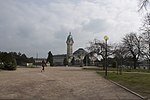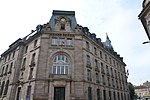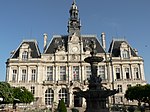École d'ingénieurs ENSIL-ENSCI
1893 establishments in FranceEducational institutions established in 1893Engineering universities and colleges in FranceGrandes écolesLimoges
École d'ingénieurs ENSIL-ENSCI (formerly École nationale supérieure d'ingénieurs de Limoges and École nationale supérieure de céramique industrielle) a French engineering College created in 1893. The school trains engineers in ceramics, materials, water engineering and environment, electronics and telecommunications, mechatronics. Located in Limoges, the ENSIL-ENSCI is a public higher education institution. The school is a member of the University of Limoges.
Excerpt from the Wikipedia article École d'ingénieurs ENSIL-ENSCI (License: CC BY-SA 3.0, Authors).École d'ingénieurs ENSIL-ENSCI
Rue Soyouz, Limoges Ester
Geographical coordinates (GPS) Address Nearby Places Show on map
Geographical coordinates (GPS)
| Latitude | Longitude |
|---|---|
| N 45.86 ° | E 1.3 ° |
Address
Rue Soyouz
Rue Soyouz
87410 Limoges, Ester
Nouvelle-Aquitaine, France
Open on Google Maps








